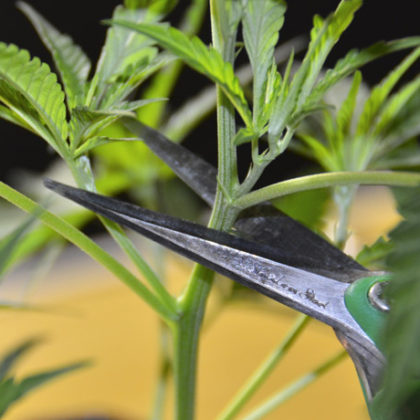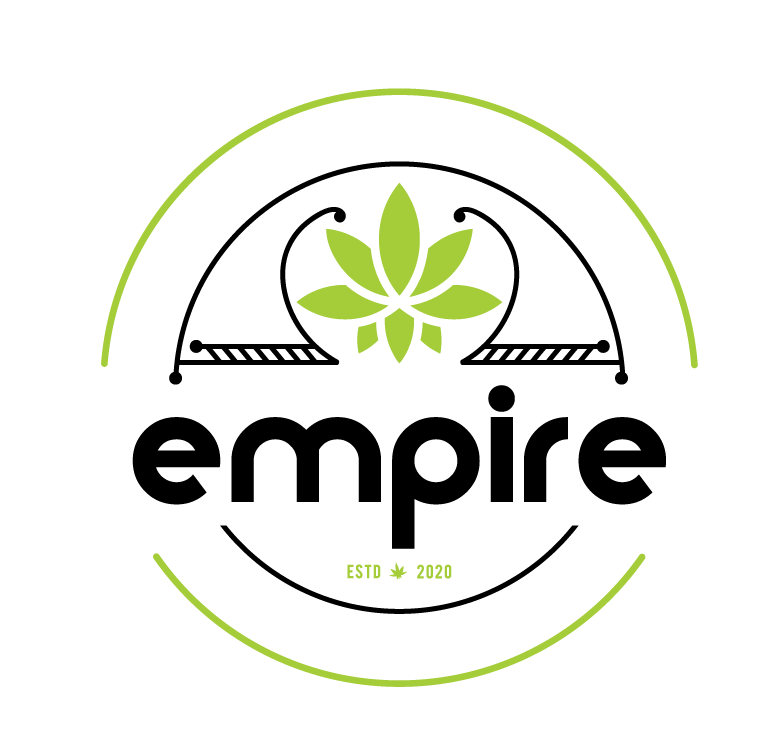Can you clone autoflower cannabis plants?

Yes, you can take cuttings from autoflower plants, but that doesn’t mean there will be any significant benefits from doing so. If you take a cutting from an autoflower it can be planted and will grow roots and grow into an identical genetic clone of the original plant. However, the fixed 10–12-week (typical) autoflower lifespan means that the cutting will have little time to grow into a substantial plant and would typically only go on to yield little more than a few buds.
The basics of cannabis plants cloning
Cannabis, like many other species of plants can be cloned. This involves cleanly removing a branch (or the growing tip), dusting it with a little hormone rooting powder and placing it in new grow medium. The resulting plant will be an identical genetic copy (or ‘clone’) of the original.
When growing feminised cannabis seeds, clones can be taken and put into the vegetative growth phase under e.g. 18-24 hours of daily light. The cuttings can be kept under this light regime until they are large enough to bloom, usually after 4-6 weeks, or so.
However, when growing autoflowering cannabis seeds, the autoflower genetics come with a pre-determined life cycle of around 10-12 weeks. That means that the bio-chemical clock starts ticking when the autoflower seed is germinated. This limits the time taken for any subsequent cuttings to fully develop.
Remember that the autoflower plant will usually be at least 3-4 weeks into its life cycle when the cutting is taken from it. Then the cutting (which is already 3-4 weeks into its life cycle) has to re-establish normal growth and grow roots (an additional 1-2 weeks). At the end of this process the small, rooted cutting will have used around 5-6 weeks of its life cycle and will have just another 5 weeks or so to complete the growth cycle with puny resulting yields (usually just a couple of buds).
Can you clone autoflower weed plants?
es, autoflower strains can be cloned and many seasoned autoflower growers have tried extensively to find a viable way to turn this into a useful purpose, but none have succeeded. Many experienced growers, for example, top their autoflower plants by removing the growth tip (often called the apical growth point). This is done to increase bushy growth, replacing the main bloom with several side blooms in the hope of increasing yield. The technique is favoured by more experienced growers who don’t mind trading some time/risk for possible yield improvements.
The growth tip/cutting is usually discarded. But some have tried growing the ‘cutting’ only to find that it has limited time left to grow and the result normally fails to impress. Usually, the cutting only produces a small bonsai-style plant capable of producing a few buds. For most growers, this is a waste of grow room space and they would rather use the space more efficiently growing a ‘normal’ plant from fresh cannabis seeds.
In many years of pioneering, developing and selling, autoflower seeds Dutch Passion have yet to find anyone who finds it cost effective (or time effective) to try to grow cuttings taken from autoflower seeds. Technically it is possible. But despite plenty of efforts from autoflower enthusiasts, no-one has yet found a sensible method.
Cloning autoflowering vs photoperiod cannabis
The autoflowering traits of cannabis can be used to great advantage by the knowledgeable cannabis grower. Plants can be grown from autoflower seed to harvest using an autoflower cannabis light schedule with 18-24 hours of daily light completing the life cycle in record time. Sometimes as little as 9 weeks when growing strains such as Auto Blackberry Kush or Auto Blueberry. But these tremendously useful autoflowering characteristics also renders autoflowers unsuitable for cloning or taking cuttings.
That’s because autoflower genetics differ significantly from photoperiod cannabis genetics. Autoflowers have a genetically fixed life cycle, restricting their total lifetime (and any cuttings taken from them) to around 75 days following autoflower seed germination.
Usually autoflowers spend their first month in vegetative growth before automatically starting the cannabis flowering stage at around 4 weeks. Once in bloom autoflowers thrive under 20 hours (or even 24 hours if you prefer) of daily light. If you take a cutting from a 4-week-old autoflower, that cutting may only have another 6 weeks of life left. In that time, the cutting has to recover, grow roots, re-establish itself and somehow produce a harvest. At best you will get a few buds from the cutting.
Many of those that have tried growing autoflower cuttings have been underwhelmed by the time and effort spent chasing a few buds. Remember too that the ‘mother’ autoflower plant which donated the cutting may also suffer a significant yield loss, especially if a sizeable portion of it was sacrificed to provide the cutting.
If cloning is an important part of your cannabis growing, then stick to photoperiod feminised cannabis seeds
Many serious growers, including professional pheno-hunters and breeders, routinely take cuttings whenever they find a stand-out individual. That’s one of the advantages of growing photoperiod feminised seeds. Cuttings can be taken preserving the genetic line. Professional growers can keep mother plants alive for many years in vegetative growth.
Autoflower seeds, by contrast, don’t have the same flexibility. Taking cuttings from them serves no real practical purpose. The benefits of autoflower seeds are their fast, easy harvests. Potency of the best autoflower genetics is now on a par with the finest photoperiod genetics.
Several Dutch Passion autoflower strains hit around or above 25% THC. These include Auto Skywalker Haze (independent lab tests show 26%+ THC) + Auto Cinderella Jack (25%+ THC independently measured), though there are plenty of other top-drawer autoflower seed options capable of exceeding 20% THC).
About 2% of Dutch Passion customers buy regular cannabis seeds. The remainder of sales are split evenly between those that buy feminised seeds and autoflower seeds. So, the fact that you can’t take cuttings from autoflowers hasn’t hindered their popularity at all. In reality, most of those that grow photoperiod feminised seeds don’t take cuttings from them anyway.
Benefits of perpetual harvesting for autoflowers
The typical indoor home grower has a tent around 1.2m x 1.2m (4ft x 4ft). These days most serious home growers use an LED, around 400-500W is usual in such tent sizes. When growing autoflower seeds many use an autoflower perpetual harvest system.
This involves germinating an autoflower seed every 2 weeks or so and putting it in the tent under 20 hours of daily light. A plant is harvested every 2 weeks, at the same time that a new autoflower seed is germinated. Usually, the tent contains 4-5 autoflower plants all separated by a 2-week age difference, all growing under the same 20/4 cannabis light cycle.
For the grower, this ensures a regular supply of fresh buds and prevents the anxieties that some growers have about possibly running out of buds before the next big harvest. You can grow different autoflower strains in the same room giving you a variety of classy options in the jars. Grow them the easy way in 20-30+ litre felt sacks or airpots with slow-release organics (BioTabs are market leaders and bullet-proof) and the grow will be virtually maintenance free.
Perpetually growing autoflower seeds produces a predictable supply of maturing plants and means you never have the hassle of harvesting more than one plant at a time (some growers dislike trimming/manual effort at harvest).
With an autoflower perpetual harvest, the grow tent is usually uncluttered too. You will have a seedling, a couple of small/medium autos and one large plant in bloom. A perpetual autoflower grow has many benefits, as do autoflower seeds in general. Even if you can’t take cuttings/clones from them.





